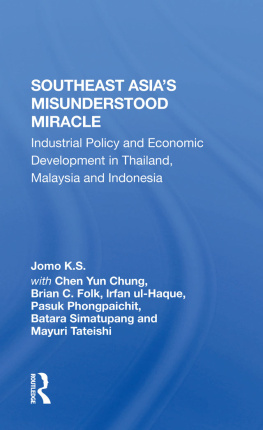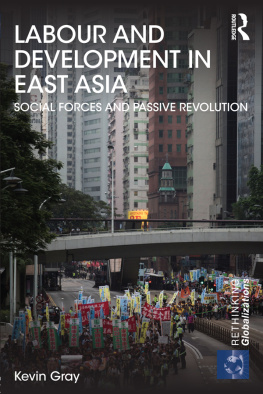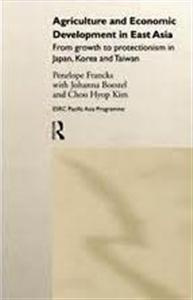Advance Praise for Resurgent Asia
In this magisterial work, Deepak Nayyar discusses one of the most important socio-economic phenomena in human history - the (re-)rise of Asia since the 1950s. Based on a deep understanding of history, Nayyar provides a most profound analysis of this momentous event and a most thoughtful contemplation of the future of the region - and the world. His analysis is panoramic in scope but never loses sight of the diversity of the process and is always concerned with the welfare of real people. A singular achievement.
HA-JOON CHANG
University of Cambridge
Author of Kicking Away the Ladder and Economics: The Users Guide
The decades since the end of the Second World War have seen the remarkable resurgence of the role of Asia in the world economy after centuries of subordination to the West. In this book Deepak Nayyar provides a brilliant overview of this process and its historical antecedents, with a masterly deployment of the relevant statistics and a wealth of sharp analytical insights. The incisive policy perspectives and critiques highlight the lessons that subsequent latecomers to this process can draw. The succinct analysis of development outcomes in Asia, which could not have been imagined fifty years ago when Gunnar Myrdal published Asian Drama, is a fitting tribute to the memory of the great Swedish scholar. It will be a major reference for decades to come.
RONALD FINDLAY
Ragnar Nurkse Professor Emeritus of Economics, Columbia University
In this remarkable book, Deepak Nayyar analyses the economic rise of Asia over the past fifty years, which has restored its historic significance in the world economy to where it was in the mid-nineteenth century. The resurgence of Asia is surprising and puzzling for the global development community, as most Asian countries followed heterodox paths for their rejuvenation. In the 1960s, the East Asian Tigers adopted an export-promotion strategy, instead of the then fashionable import-substitution strategy, to witness an economic transformation described as a miracle. During the 1980s, other Asian economies adopted a pragmatic piecemeal approach, instead of the shock-therapy advocated by the prevalent neoliberal thinking, to make a transition from planned economies to market economies redefining the relationship between governments and markets. The book is a must read for anyone who wants to understand Asias past, present and future, which could chart paths to prosperity in other parts of the developing world.
JUSTIN YIFU LIN
Dean and Professor, Institute of New Structural Economics, Peking University, and former chief economist, the World Bank
This is a fascinating book which provides an incisive analysis of the dramatic changes in the economic fortunes of Asia during the last fifty years. It is conscious of history, informed by theory, and grounded in solid knowledge. The author unravels a success story that has defied the pessimism implicit in Gunnar Myrdals Asian Drama and that has refused to be caught in paradigmatic straitjackets. Deepak Nayyar marshalls evidence with care, through the maze of diversity in a vast continent, to develop an understanding in a style that is engaging and accessible for readers. Lessons from experience are drawn for other countries, not to establish an Asian Model, but to signal diversity, complexity, experimentation and context-specificity, while highlighting real fundamentals of development. This book is essential reading for anyone who wants to understand, and learn from, the rise of Asia. I would particularly recommend the book to African readers engaged in the search for a way forward after the blinding decades of neoliberalism.
THANDIKA MKANDAWIRE
Chair and Professor of African Development, London School of Economics
Deepak Nayyars Resurgent Asia is an outstanding analysis of the development of the worlds most dynamic economic region over the past five decades. In historical terms, it shows that the strong economic growth and increasing role of Asia in the world economy is in sharp contrast to the Great Divergence generated by imperialism since the early nineteenth century. In sharp contrast with orthodox views, it argues that Asias success was associated with a strategic rather than a passive integration into the world economy, in which sensible industrial policies implemented by effective governments played the critical role. It also presents an excellent view of diversity of development experiences in different sub-regions and countries, and a social pattern in which massive poverty reduction was accompanied by rising inequality within and among countries. It is a must read for development analysts and practitioners, but also for economic historians of the contemporary world.
JOSE ANTONIO OCAMPO
Member of the Board of the Central Bank of Colombia, Chair of the United Nations Committee for Development Policy and Professor at Columbia University
Gunnar Myrdal was famously wrong in his economic prognosis for Asia. Asian growth miracles have come in waves since the end of the Second World War, with each wave largely a surprise to the rest of the world. Japan was first in the 1950s, followed by the Gang of Four (South Korea, Taiwan, Singapore, Hong Kong) in the 1960s and 1970s, Malaysia, Thailand, and Indonesia after the 1970s, China since the 1980s, Vietnam and India since the 1990s. Their experiences have often been analyzed through a lens that reflects the analysts predilections instead of the reality on the ground. Deepak Nayyars non-ideological, no-nonsense account avoids the common pitfalls and draws a comprehensive picture of the continents economic development. It provides a unified interpretation informed by a broad theoretical perspective, while doing justice to the diversity of the Asian experience.
DANI RODRIK
Professor of International Political Economy, Harvard University
In an impressive, wide-ranging and penetrating account, this book records and analyses the Asian Drama of the last fifty years. Deepak Nayyars ambitious and exciting book examines the remarkable transformation of the continent, from its marginal significance in the global economy to a situation where it accounts for almost a third of world output, and from abysmally low health, education and income levels, to a situation where human development is converging to levels achieved in developed countries and income levels are converging towards the world average. The author points to differences as well as similarities in political conditions and economic performance across countries in Asia, to recognize diversity and analyse success. The book explains why the twenty-first century might be termed the Asian century, following two centuries of underdevelopment which was largely due to structures and policies imposed by Western colonialism.
FRANCES STEWART
Emeritus Professor of Development Economics, University of Oxford
The last fifty years have constituted a significant historical time-marker for Asia. Countries ceased to be colonies of Europe or Japan and became independent nations. The economic basis of the transformative change since then is admirably analyzed in this book with lucid explanations and persuasive arguments. This would be comprehensible even to non-economists and other social scientists, such as sociologists, contemporary historians, commentators on politics, as well as general interested readers. What makes the book even more perceptive are the passing pointers to parallel concerns emanating from a variety of nationalisms affecting politics and democratic institutions, as also the imprint of change in social habits and cultural articulations.
ROMILA THAPAR
Professor Emeritus of History, Jawaharlal Nehru University






